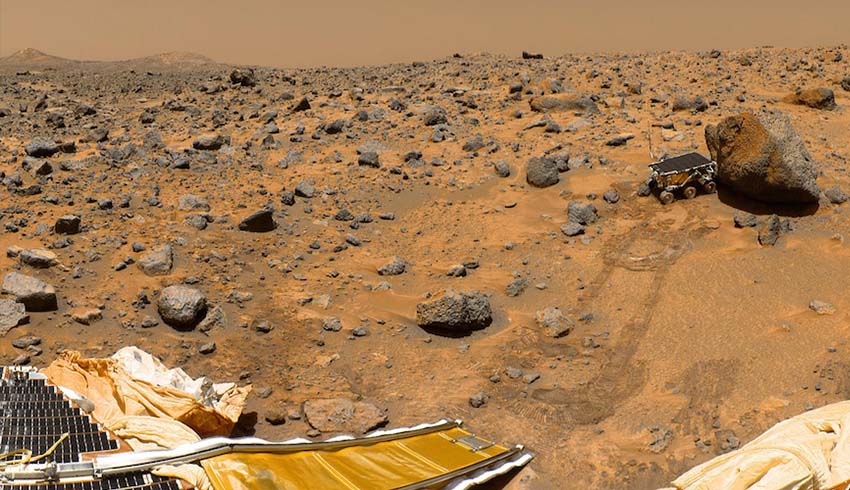
Rosalind Franklin, which is the result of cutting-edge work from UK, European and Canadian scientists and engineers, will now be shipped from the Airbus factory in Stevenage, Hertfordshire to Toulouse in France for testing to ensure it survives its launch from Earth next summer and the freezing conditions of Mars when it lands on the planet in March 2021.
The rover is part of ESA’s ExoMars mission to examine the geological environment on Mars and search for signs of life, past or present.
Dr Graham Turnock, CEO of the UK Space Agency, said, "This is a major milestone for this exciting project, which demonstrates the UK’s leading capabilities in robotics, space engineering and exploration, as well as our ongoing commitment to the European Space Agency."
Recently the panoramic camera system that will allow the rover to ‘see’ was successfully fitted. With funding and support from the UK Space Agency and ESA, PanCam was developed in Britain by scientists from UCL’s Mullard Space Science Laboratory (MSSL), working with the University of Aberystwyth and dozens of other experts across the UK in partnership with colleagues in Switzerland, Germany, Austria and scientists from nine nations.
"As we hand the rover over to France for final testing, we should celebrate the huge efforts of the hundreds of people across the UK who have been involved in the design and build of the rover and its instruments, which will look for life on Mars," Dr Turnock said.
UK scientists from the University of Leicester and Teledyne e2v worked on the rover’s Raman Spectrometer, a powerful tool for the identification and characterisation of Martian minerals. The UK Science and Technology Facilities Council provided electronics, including the data processing board.
Colin Paynter, managing director of Airbus Defence and Space UK, said, "Seeing the Rosalind Franklin rover finally leave Airbus in Stevenage is a great moment, and I would like to thank all the teams involved for their efforts in making this happen. This European flagship mission now moves to the next stage for final testing and one step closer to launching to the Red Planet next summer."
ExoMars is an ESA program in co-operation with Russian Space Agency Roscosmos with contribution of NASA. Thales Alenia Space is the key ExoMars mission industrial partner, supported by Airbus Defence and Space for the rover vehicle, OHB for the carrier module, Lavochkin for the descent module and its surface platform, while Leonardo has provided Rosalind Franklin’s drill.
The UK government is increasing investment in science to 2.4 per cent of UK GDP by 2027. The ambition is for the UK be the world’s most innovative economy – and its leadership in ESA is a part of this ambition.
Dr David Parker, director human and robotic exploration at ESA, explained, "Completing the build of the Rosalind Franklin rover under the strict cleanliness requirements, with all the science instruments onboard, is a major milestone of our ExoMars program. It is thanks to the dedication of all the teams involved that we are able to celebrate this moment today."
The UK’s investments in ESA are strengthening the UK’s national capability in space, which is fundamental to modern day life, from weather forecasting and satellite TV, to communications and monitoring climate change.
The UK will make ambitious new subscriptions to ESA programs in November, which will strengthen capabilities further and ensure the UK plays a significant role in global efforts to return humans to the moon, bring back the first samples from Mars and develop innovative new technologies for life on Earth.
ESA is an international organisation with 22 member states. By co-ordinating the financial and intellectual resources of its members, it can undertake space programs and activities far beyond the scope of any single European country.
ESA’s Ministerial Councils bring together ESA’s member states every two to three years to decide on new proposals and funding for ESA’s next years of work. The next one, called ‘Space19+’, will be held in November 2019.
Receive the latest developments and updates on Australia’s space industry direct to your inbox. Subscribe today to Space Connect here.









